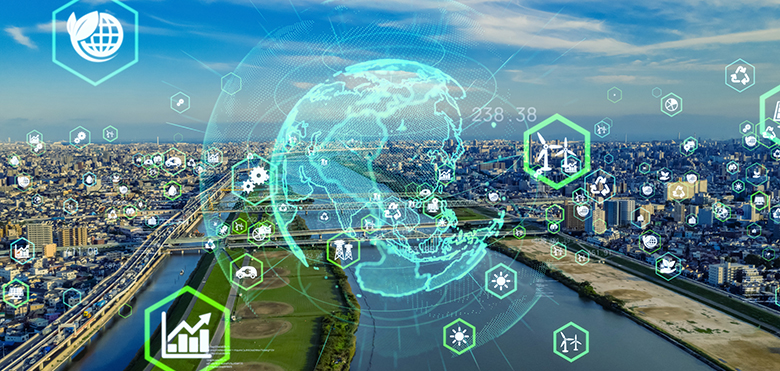Sustainability is a key objective for everyone, and cities play a significant role in achieving it. Despite occupying only 2% of the world’s surface, cities produce over 70% of global greenhouse gas emissions and account for over 80% of the world’s GDP. As urbanization continues to increase, cities face challenges in meeting sustainability goals. City authorities are expected to comply with regulations and policies from various organizations and citizens. The COVID-19 pandemic has also influenced city planning, highlighting the importance of cleanliness, open spaces, and green areas.
The United Nations (UN) Sustainable Development Goals (SDGs) provide a framework for cities to work towards sustainability. These 17 goals, established in 2015 with a target deadline of 2030, aim to create a better and more sustainable future for all. Recent research shows that cities prioritize key SDG indicators, such as citizen safety, sustainability metrics in planning processes, and environmental metrics in investment decisions.
Video surveillance technology, particularly with advanced video analytics and sensor integration, can support cities in addressing sustainability challenges and achieving SDGs. Three crucial areas of focus for cities are the environment, mobility, and public safety, all interconnected and dependent on data sharing and partnerships. Monitoring environmental factors, like air quality and waste management, is essential for ensuring citizen well-being. Video surveillance can provide early warnings, visual verification, and data analysis for long-term initiatives to reduce pollution and improve communication with citizens. It can also monitor waste collection, prevent illegal dumping, and detect vandalism and littering. With the increasing frequency of severe weather conditions, video surveillance can aid in early flood detection, warning systems, and rescue operations.
In terms of sustainable mobility and transportation, affordable and environmentally-friendly public transport systems are crucial. Video surveillance helps ensure the safety of citizens on public transportation and monitors road traffic to prevent congestion and pollution. Traffic incident analytics can improve the management of urban traffic and reduce road injuries and deaths. Environmental sensor data and video surveillance can also assist in planning transportation infrastructure and directing drivers to available parking spots or electric vehicle charging stations.
Public safety is another important aspect of a sustainable city. Video surveillance plays a vital role in providing access to safe and inclusive green and public spaces. As urban centers can attract criminal activity and pose risks to large populations, video surveillance, combined with intelligent analytics, can detect anomalies, unusual patterns, and suspicious behavior, enabling quick intervention through emergency services.
Overall, video surveillance, when integrated with other technologies and data sources, can contribute to achieving sustainability goals in cities by addressing environmental concerns, promoting sustainable mobility, and ensuring public safety.










